Transcription of NOVEMBER 2020 Measuring Women’s Economic …
1 1 A COMPENDIUM OF SELECTED TOOLSSECTION NAME GOES HEREM ayra Buvinic Megan O Donnell James C. Knowles & Shelby BourgaultMeasuring women s Economic empowerment A Compendium of Selected Tools NOVEMBER 2020 Measuring women S Economic empowerment 2 SECTION NAME GOES HEREA cknowledgmentsThis WEE Measurement Compendium was funded by generous grants from the ExxonMobil Foundation to the Center for Global Development (CGD) and the Bill & Melinda Gates Foundation to Data2X, housed at the UN Foundation. We are grateful to these foundations for their unwavering commitment to and support of women s Economic empowerment objectives and improved gender data and measurement. Our special thanks go to Aletheia Donald, World Bank Africa Gender Innovation Lab; Albert Motivans, Equal Measures 2030; Euan Ritchie, CGD; and Lee Robinson, CGD, for their insightful review of and suggestions on a draft manuscript.
2 Many thanks are also due to Elizabeth Black, Nina Rabinovitch Blecker, and Natalie Cleveland from Data2X, for helping to shepherd the compendium s production, and to Rebecca Aviva Hume for her design the AuthorsMayra Buvinic is Senior Fellow at the Center for Global Development (CGD) and Data2X. Megan O Donnell is Assistant Director, Gender Program at CGD. James C. Knowles is Independent Consultant, Data2X. Shelby Bourgault is an intern at 2020 Data2X & Center for Global Development1 A COMPENDIUM OF SELECTED TOOLSIN THIS COMPENDIUMC ontents 2 Executive Summary 12 Introduction 14 How is WEE Measured & Defined? 20 Which Tools Are Included in the Compendium? 24 What Type of Tool Fits Your Purpose? 28 Population Monitoring (PM) Tools 42 Monitoring & Evaluation (M&E) Tools 52 Concluding Comments & Suggestions 56 Notes 58 Annex 1 Elements & Dimensions of the WEE Conceptual Framework 59 Annex 2 Search Terms 60 Annex 3 Procedures Used to Calculate the Indexes in PM Tools 74 Annex 4 List of PM Indicators by Conceptual Framework Element & Dimension 92 Annex 5 Assessment of the Information Included in M&E Tools 98 Annex 6 List of M&E Indicators by Conceptual Framework Element & Dimension 110 References Measuring women S Economic empowerment 2 SECTION NAME GOES HEREE xecutive SummaryObjectiveThis Measuring women s Economic empowerment (WEE)
3 Compendium selects and reviews tools for Measuring women s Economic empowerment (or disempowerment) grouped into 20 population monitoring tools (PM) and 15 monitoring and evaluation tools (M&E). The main objective is practical: helping readers both understand how different measurement tools are built and select among the most well-known and widely (cross-culturally) applicable tools for different purposes. Tools in this context are defined as resources composed of conceptual frameworks, sets of indicators and/or indexes that are designed to support the measurement of WEE outcomes and track their progress over time. The compendium includes: 1) an overview of existing WEE measurement tools; 2) systematic evaluation of the tools technical content; and 3) a structured inventory of the tools indicators. Measuring women S Economic empowerment 23 A COMPENDIUM OF SELECTED TOOLSEXECUTIVE SUMMARYWhat These Tools MeasurePM tools monitor progress according to a set of WEE-related indicators in countries (or groups of countries) these are tools for aggregate-level population monitoring.
4 PM tools usually calculate country indexes that allow users to compare countries progress in WEE-related outcomes. PM indexes provide useful information for a variety of audiences, including, for instance, donors wishing to establish country partnerships and impact investors seeking promising countries for social tools monitor and evaluate the outcomes of WEE-related projects and programs. M&E tools are primarily used by researchers and program implementers to monitor the effects of a program or study the program s impact on WEE-related inputs, outputs, and compendium is limited to complete tools presenting sufficient information for a thorough review of their purposes, methodologies, and underlying data s Economic empowerment (WEE) Conceptual FrameworkA WEE conceptual framework, based on the rich literature on this topic, guided the selection of tools.
5 The framework conceptualizes WEE both as a process and an outcome. The process of empowerment (also known as the exercise of agency ) is an intermediate step that leads to a final WEE outcome that has both an objective and a subjective dimension (Figure 1). WEE is the product of contextual, household, and individual (capabilities) factors. Contextual and household factors define Economic opportunities for women , separately and jointly. women s capabilities include individual (and community) endowments that enable them to exercise agency and take advantage of Economic opportunities. There are feedback loops between women s capabilities, Economic opportunities, and final outcomes, with both virtuous empowerment cycles and vicious disempowerment tools address one or more dimensions of the compendium s WEE conceptual framework. Many of the PM tools address different dimensions in the resources side of the WEE framework, such as laws and regulations, discrimination, and security.
6 Most M&E tools focus on Measuring WEE as a final outcome in both its objective and subjective dimensions, and many measure empowerment (the expression of agency) as an intermediate outcome. Measuring women S Economic empowerment 4 EXECUTIVE SUMMARYFIGURE 1 (Appears on page 17) women s Economic empowerment FrameworkSource: Authors illustrationRESOURCESI ndependent variables/ determinants AGENCYI ntermediate outcome variables ACHIEVEMENTSF inal outcome variables HOUSEHOLD FACTORSI ntrahousehold allocation of work and resourcesCONTEXT FACTORSLaws, regulations, and policies; Social norms; Economic / job market featuresINDIVIDUAL CAPABILITIESECONOMIC OPPORTUNITIES FOR WOMENWOMEN S Economic empowerment (WEE)EXERCISE OF AGENCY/ EMPOWERMENT5 A COMPENDIUM OF SELECTED TOOLSEXECUTIVE SUMMARYP opulation Monitoring (PM) ToolsThe 20 PM tools (Table 4) vary in their objectives, dimensions, indicators, data sources, and coverage of countries and years but all PM tools we review calculate country indexes and/or PM tools follow at least some of recommended nine steps to construct a technically sound index most have a clear conceptual framework, use stated criteria to select variables, have reliable data sources, and use standard procedures convert data into comparable indicators.
7 Around half use statistical analysis to assess the properties of their conceptual frameworks. However, most do not analyze the implications of their numerous 20 PM tools include 312 PM indicators distributed across the different WEE framework dimensions. Monitoring & Evaluation (M&E) ToolsMost M&E tools (Table 7) reflect outcomes for all women , but some focus on more specific sub-populations. Tools vary in the number of dimensions and indicators they include. Although all M&E tools share the common purpose of Measuring WEE outcomes individually (as distinct from developing an index of multiple outcomes), some M&E tools are best suited for impact evaluations because their indicators are relatively complex, requiring expensive data collection that is only practical in impact evaluations, while other M&E tools are more suitable for traditional M&E because their indicators are simpler and less expensive to collect (often focused on inputs, outputs, and direct outcomes rather than intermediate or final outcomes).
8 The usefulness of an M&E tool can be gauged by whether it meets six particular criteria, including those related to its underlying theory of change and the selection, definition, and measurement of its indicators. The tools we review vary in their performance against these criteria. A well-documented theory of change forms the backbone and strength of M&E tools and differentiates tools from each M&E tools include a total of 164 indicators that are used in one or more of the 15 M&E tools to capture individual, household, and community-level outcomes. Measuring women S Economic empowerment 6 EXECUTIVE SUMMARYC hoosing Tools and IndicatorsThe following basic questions can help readers select which WEE measurement tool is a good fit for your purpose :1. What is your desired objective? (population monitoring or M&E)2. What is your substantive focus?
9 ( , gender equality, women s legal rights, women s empowerment in agriculture)3. What specific dimensions of WEE interest you? ( , financial inclusion, land rights)4. What population of women are you seeking to learn about? ( women globally, women entrepreneurs, women in Africa)5. What level(s) of outcomes direct, intermediate and/or final interest you? (M&E tools only)Table 4 (PM tools) and Table 7 (M&E tools) provide an overview of the main features of the 34 tools in the compendium and can help with the selection of tools in response to the questions above. The inventory of 476 indicators in this compendium from PM tools (Annex 4) and M&E tools (Annex 6) is a potentially useful resource for those tasked with developing WEE-related PM tools and M&E frameworks for project monitoring or impact A COMPENDIUM OF SELECTED TOOLSEXECUTIVE SUMMARYTABLE 4 (Appears on page 31)Main Features of the Population Monitoring Tools Reviewed in the CompendiumSource.
10 Authors summariesOrganizationTool FocusPopulationCountriesGender Equality IndexEuropean UnionGender equalityAll women28 SDG Gender Index Equal Measures 2030 Gender equalityAll women129 Female Entrepreneurship Index (FEI)GEDIW omen s business opportunityWomen entrepreneurs77 Individual Deprivation Measure (IDM)aIDMM ulti-dimensional povertyMales and females age 16+ 3 women s empowerment in Agriculture Index (WEAI)aIFPRIW omen s empowerment in agricultureWomen working in agriculture3 Project women s empowerment in Agriculture Index (pro-WEAI)aIFPRIW omen s empowerment in agriculture women working in agriculture9 Social Institutions and Gender Index (SIGI)OECDD iscrimination against womenAll women129 women s Economic empowerment and Equality Dashboard (WE3)USAIDW omen s participation in the economyAll women180 Global Gender Gap IndexWorld Economic ForumGender equality All women134 women , Business and the Law Index (WBL)World Bank GroupLegal rights of womenAll women190 women s empowerment Index (WEI)aThe Hunger ProjectWomen s empowermentAll women8 women , Peace, and Security Index (WPS Index)Georgetown University women s inclusion, justice and securityAll women153 women s Economic Opportunity Index (WEOI)Economist Intelligence UnitWomen s Economic opportunityAll women128 Africa Gender Equality Index African Development BankGender equalityAll women54 Gender Development Index (GDI)

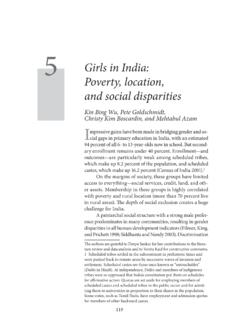



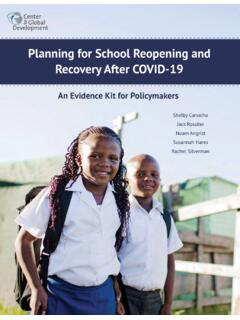
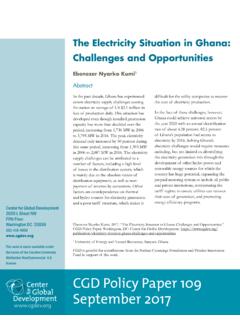
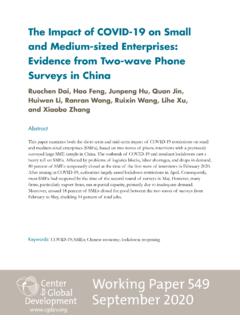


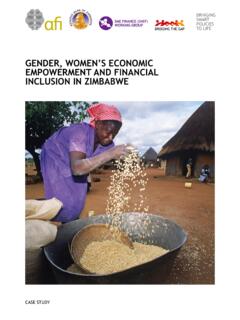
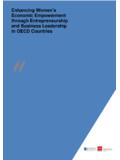
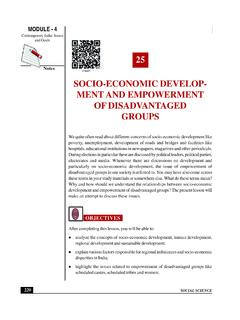
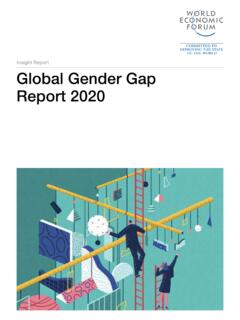
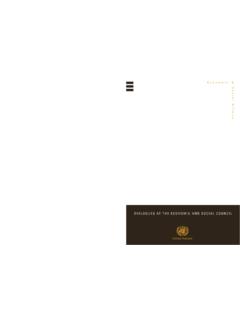
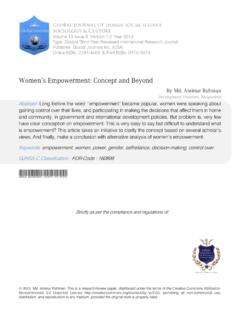
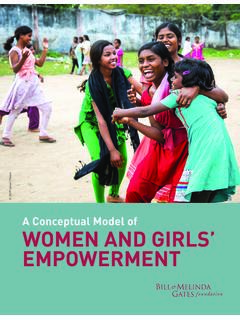
![Gender Equality and Women's Empowerment in India [OD57]](/cache/preview/0/7/f/d/9/7/1/6/thumb-07fd97166dd92c7359501888c42037d3.jpg)